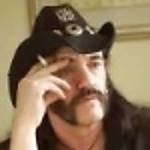
Hosted by Darren Baker
DML StuG III Ausf A

wbill76

Joined: May 02, 2006
KitMaker: 5,425 posts
Armorama: 4,659 posts

Posted: Monday, December 08, 2008 - 07:21 AM UTC
Thanks Jeff! 

jimz66

Joined: December 15, 2006
KitMaker: 1,165 posts
Armorama: 1,105 posts

Posted: Monday, December 08, 2008 - 02:50 PM UTC
Bill that is exactly what I am looking for. Believe it or not.
Bill I edited this after thinking about it for awhile. Maybe if you could just show a couple of the tool brackets in different stages. I am still having some trouble getting them to assemble them for me.
Bill I edited this after thinking about it for awhile. Maybe if you could just show a couple of the tool brackets in different stages. I am still having some trouble getting them to assemble them for me.

wbill76

Joined: May 02, 2006
KitMaker: 5,425 posts
Armorama: 4,659 posts

Posted: Sunday, December 14, 2008 - 02:32 PM UTC
Quoted Text
Bill that is exactly what I am looking for. Believe it or not.
Bill I edited this after thinking about it for awhile. Maybe if you could just show a couple of the tool brackets in different stages. I am still having some trouble getting them to assemble them for me.
James,
Sorry I missed this one...but if tool brackets are where you are having trouble then the Eduard set is perfect for you. The brackets are all 1 piece including the handle, you just fold it all into position and that's it, no fuss. What type are you using that's giving you trouble?

wbill76

Joined: May 02, 2006
KitMaker: 5,425 posts
Armorama: 4,659 posts

Posted: Sunday, December 14, 2008 - 02:33 PM UTC
The latest round of progress dealt almost exclusively with painting. I started things out by applying a primer coat of Italian Dark Brown to check everything and provide a foundation for the follow on coats.

Since I'm finishing this as a 1941 vehicle, the finish will be overall panzer gray, so that came next in the form of very light multiple airbrush passes of Panzer Schwarzgrau thinned down to allow the paint to slowly build up vs. a single heavy coat.

Next I added some highlights and shadows by selectively applying an 80/20 mix of Panzer Schwarzgrau/Light Gray. I dropped the airbrush pressure down to around 15 psi and used a 50-50 thinned mixture so as to avoid splatter but still be able to control where it went. This makes a nice foundation for the later weathering and variation steps that will take place while building on the underlying coat.

The road wheels came next, they were mounted on cut-down toothpicks with blue poster putty and stuck into my trusty styrofoam box base.

The appropriate circle diameters were masked off on my circle template, in this case 1/2" for the inner hub and 7/16" for the outer hub. The return rollers called for the 13/64" circle.

I sprayed the entire wheel first with Gunmetal to establish the desired rubber color, then used the template to airbrush the panzer gray portion. Once dry, the inner hubs were also sprayed.

The road wheel halves were then assembled and allowed to set up for about 1 hour before being mounted to the suspension arms with liquid glue.

Rounding things out, the return rollers were installed on both sides. This is a little tricky as the mount posts on the rollers are slightly smaller than the supports on the hull, so they have a little room to sag if not careful. I glued them into position and laid the model on its side, checking every 10 minutes or so as it set up that they didn't drift out of alignment. Once one side was done, the other went through the same process.

Next up are the tracks and the detailing work will begin on the fender equipment.

Since I'm finishing this as a 1941 vehicle, the finish will be overall panzer gray, so that came next in the form of very light multiple airbrush passes of Panzer Schwarzgrau thinned down to allow the paint to slowly build up vs. a single heavy coat.

Next I added some highlights and shadows by selectively applying an 80/20 mix of Panzer Schwarzgrau/Light Gray. I dropped the airbrush pressure down to around 15 psi and used a 50-50 thinned mixture so as to avoid splatter but still be able to control where it went. This makes a nice foundation for the later weathering and variation steps that will take place while building on the underlying coat.

The road wheels came next, they were mounted on cut-down toothpicks with blue poster putty and stuck into my trusty styrofoam box base.

The appropriate circle diameters were masked off on my circle template, in this case 1/2" for the inner hub and 7/16" for the outer hub. The return rollers called for the 13/64" circle.

I sprayed the entire wheel first with Gunmetal to establish the desired rubber color, then used the template to airbrush the panzer gray portion. Once dry, the inner hubs were also sprayed.

The road wheel halves were then assembled and allowed to set up for about 1 hour before being mounted to the suspension arms with liquid glue.

Rounding things out, the return rollers were installed on both sides. This is a little tricky as the mount posts on the rollers are slightly smaller than the supports on the hull, so they have a little room to sag if not careful. I glued them into position and laid the model on its side, checking every 10 minutes or so as it set up that they didn't drift out of alignment. Once one side was done, the other went through the same process.

Next up are the tracks and the detailing work will begin on the fender equipment.
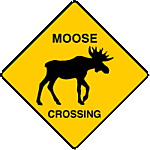
DT61

Joined: September 18, 2005
KitMaker: 1,226 posts
Armorama: 819 posts

Posted: Sunday, December 14, 2008 - 02:40 PM UTC
Looking forward to seeing this one weathered, great job.
Darryl
Darryl
jimz66

Joined: December 15, 2006
KitMaker: 1,165 posts
Armorama: 1,105 posts

Posted: Monday, December 15, 2008 - 02:00 AM UTC
Bill looking good as always. The ones I have been using are from Dragon. I think I just need a lot more practice that's all. Thanks. I was just looking for step by step photos that might help. Take care.

wbill76

Joined: May 02, 2006
KitMaker: 5,425 posts
Armorama: 4,659 posts

Posted: Monday, December 15, 2008 - 03:14 AM UTC
DT,
Thanks for the comments!
James,
The Dragon clamps are extremely un-user friendly IMHO and I've struggled with them as well so you shouldn't feel alone there. Eduard's style is the easiest to use since they are one-piece and I would rank the Griffon set right after them as they are two piece with just the handle separate as the 2nd piece. Tool clamps are the bane of modelers everywhere and, while there are those who have mastered them thoroughly to the point where they can handle Aber working clamps with their eyes closed, I'm not one of them!

Thanks for the comments!
Quoted Text
Bill looking good as always. The ones I have been using are from Dragon. I think I just need a lot more practice that's all. Thanks. I was just looking for step by step photos that might help. Take care.
James,
The Dragon clamps are extremely un-user friendly IMHO and I've struggled with them as well so you shouldn't feel alone there. Eduard's style is the easiest to use since they are one-piece and I would rank the Griffon set right after them as they are two piece with just the handle separate as the 2nd piece. Tool clamps are the bane of modelers everywhere and, while there are those who have mastered them thoroughly to the point where they can handle Aber working clamps with their eyes closed, I'm not one of them!


Posted: Monday, December 15, 2008 - 03:32 AM UTC
Looking good Bill. We´re gonna have to start pressuring you to include a figure and some groundwork! You´re making these builds look too easy and too staright forward. 




wbill76

Joined: May 02, 2006
KitMaker: 5,425 posts
Armorama: 4,659 posts

Posted: Monday, December 15, 2008 - 07:16 AM UTC
Quoted Text
Looking good Bill. We´re gonna have to start pressuring you to include a figure and some groundwork! You´re making these builds look too easy and too staright forward.

Thanks Frank, appreciate the comments (and lobbying!) as always.


wbill76

Joined: May 02, 2006
KitMaker: 5,425 posts
Armorama: 4,659 posts

Posted: Saturday, December 20, 2008 - 03:53 PM UTC
I started in on 2 weeks of vacation today so I hope to get in quite a bit of time to finish this one up before the year's out!
Today's efforts focused on the tools and fender gear. I had previously removed all the molded on clamps so now it was time to paint and detail them. The first step was to paint all the metallic surfaces with Testors Non-Buffing Metalizer Gunmetal. Even though the bottle says "airbrush only", these paints work great with a normal brush provided you keep the bottle well shaken, you have plenty of ventilation (they are lacquer based so heavy on the fumes), and you clean the brushes properly after use. The metalizer has the added advantage of drying very fast, so it's easy to move from one step to the next.

The metalizer by itself is pretty dark, but because it has small flakes in it, it serves as an excellent foundation for dry-brushing. I use a small brush and Model Master Steel to lighten it, wiping the brush on a doubled-over paper towel several times before committing it to the metalizer surface. Areas that I want to be brighter get multiple passes. Doing the dry-brushing now provides a lot of flexibility for both handling and not having to worry about it bleeding over into non-metallic areas.

Next is the detail painting for the "mixed media" tools...the wood handles or staves and the bakelite handles for the wire-cutters. I have my own special mix of "wood" color, but any tan or similar color will do as a base depending on what you've got available or feel like mixing up. I used Italian Dark Brown for the wire-cutter handles and Gunmetal for the rubber bases. The leather cover for the gun swab was painted first with enamel Leather and then brushed with black artist pastels to darken and vary it a bit.

Focusing in on the wood portions, I created an impromptu wash of Leather and thinner using a contact lens container as the mixing cup. I take a single brush full of paint, add thinner up to the top, then use the same brush to mix it all up together into a wash. There's not much time since the thinner will start to evaporate quickly because it's pretty thin, so I mix it up and apply immediately. This wash gets added to the wood portions in a single pass (anything more than that and the base paint will lift up) and then they are stuck into my handy blob of poster putty and allowed to dry.

The color is then accentuated by using artist pastels, I have a set of Mungyo sticks that I picked up at Hobby Lobby for $5 several years ago...they last forever and are very versatile. I use a Filbert brush that has a stubby thick handle and load it up with the pastel dust, then apply it to the handles and allow the paint to "grab" it and produce some subtle shading and variation in the process. Passes are done lightly to avoid it getting too heavy.

Once everything was set and dry, the tools were installed into their various clamps and secured. Photos show that the gun swab was sometimes installed with the head towards the front, sometimes to the rear...I chose the front just to allow it to show some color contrast to the hull.

The opposite fender got the same treatment with its tools installed. The jack block received the same treatment as the wood handles on the other tools and the Eduard etched wood-grain really "pops" under this approach. Too bad most of it will get hidden away...

...by the installed tool box.

Still need to work on the rear hull details and then will start the weathering of the lower hull and get the tracks squared away.
Today's efforts focused on the tools and fender gear. I had previously removed all the molded on clamps so now it was time to paint and detail them. The first step was to paint all the metallic surfaces with Testors Non-Buffing Metalizer Gunmetal. Even though the bottle says "airbrush only", these paints work great with a normal brush provided you keep the bottle well shaken, you have plenty of ventilation (they are lacquer based so heavy on the fumes), and you clean the brushes properly after use. The metalizer has the added advantage of drying very fast, so it's easy to move from one step to the next.

The metalizer by itself is pretty dark, but because it has small flakes in it, it serves as an excellent foundation for dry-brushing. I use a small brush and Model Master Steel to lighten it, wiping the brush on a doubled-over paper towel several times before committing it to the metalizer surface. Areas that I want to be brighter get multiple passes. Doing the dry-brushing now provides a lot of flexibility for both handling and not having to worry about it bleeding over into non-metallic areas.

Next is the detail painting for the "mixed media" tools...the wood handles or staves and the bakelite handles for the wire-cutters. I have my own special mix of "wood" color, but any tan or similar color will do as a base depending on what you've got available or feel like mixing up. I used Italian Dark Brown for the wire-cutter handles and Gunmetal for the rubber bases. The leather cover for the gun swab was painted first with enamel Leather and then brushed with black artist pastels to darken and vary it a bit.

Focusing in on the wood portions, I created an impromptu wash of Leather and thinner using a contact lens container as the mixing cup. I take a single brush full of paint, add thinner up to the top, then use the same brush to mix it all up together into a wash. There's not much time since the thinner will start to evaporate quickly because it's pretty thin, so I mix it up and apply immediately. This wash gets added to the wood portions in a single pass (anything more than that and the base paint will lift up) and then they are stuck into my handy blob of poster putty and allowed to dry.

The color is then accentuated by using artist pastels, I have a set of Mungyo sticks that I picked up at Hobby Lobby for $5 several years ago...they last forever and are very versatile. I use a Filbert brush that has a stubby thick handle and load it up with the pastel dust, then apply it to the handles and allow the paint to "grab" it and produce some subtle shading and variation in the process. Passes are done lightly to avoid it getting too heavy.

Once everything was set and dry, the tools were installed into their various clamps and secured. Photos show that the gun swab was sometimes installed with the head towards the front, sometimes to the rear...I chose the front just to allow it to show some color contrast to the hull.

The opposite fender got the same treatment with its tools installed. The jack block received the same treatment as the wood handles on the other tools and the Eduard etched wood-grain really "pops" under this approach. Too bad most of it will get hidden away...

...by the installed tool box.

Still need to work on the rear hull details and then will start the weathering of the lower hull and get the tracks squared away.
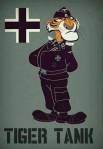
PanzerKarl

Joined: April 20, 2004
KitMaker: 2,439 posts
Armorama: 1,980 posts
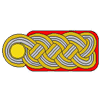
Posted: Saturday, December 20, 2008 - 08:30 PM UTC
Great looking model,and a great blog.
Keep it coming

Karl
Keep it coming

Karl
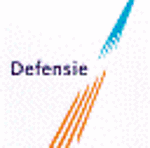
marsiascout

Joined: March 24, 2008
KitMaker: 1,247 posts
Armorama: 913 posts

Posted: Saturday, December 20, 2008 - 11:02 PM UTC
Super step by step and a great finish!
Lars
Lars

wbill76

Joined: May 02, 2006
KitMaker: 5,425 posts
Armorama: 4,659 posts

Posted: Sunday, December 21, 2008 - 04:35 AM UTC
Karl, Lars, appreciate the comments, thanks for looking! 

jimz66

Joined: December 15, 2006
KitMaker: 1,165 posts
Armorama: 1,105 posts

Posted: Sunday, December 21, 2008 - 12:53 PM UTC
Bill very nicely done. Your work as always speaks for itself. I hope I can learn from you as I begin to work on my stuff sooner rather than later.
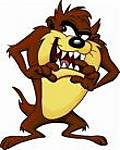
newfish

Joined: June 23, 2008
KitMaker: 2,329 posts
Armorama: 2,110 posts

Posted: Sunday, December 21, 2008 - 12:59 PM UTC
impressive start the paint jobie looks awsum
i didint know thta he use a stug i know about the tiger and panzer IV

i didint know thta he use a stug i know about the tiger and panzer IV


wbill76

Joined: May 02, 2006
KitMaker: 5,425 posts
Armorama: 4,659 posts

Posted: Sunday, December 21, 2008 - 03:44 PM UTC
James,
Thanks for the comments, you've got to get cracking on your stack sooner or later!
James (newfish),
Thanks for commenting as well. Most people associate Wittmann with the Tiger as a "panzer ace" but he did indeed get his start in the StuG. Many of the celebrated aces had somewhat humble beginnings...Carius started out as a gunner in a 38(t) for example.
Thanks for the comments, you've got to get cracking on your stack sooner or later!

James (newfish),
Thanks for commenting as well. Most people associate Wittmann with the Tiger as a "panzer ace" but he did indeed get his start in the StuG. Many of the celebrated aces had somewhat humble beginnings...Carius started out as a gunner in a 38(t) for example.

jimz66

Joined: December 15, 2006
KitMaker: 1,165 posts
Armorama: 1,105 posts

Posted: Sunday, December 21, 2008 - 04:26 PM UTC
Yah I know. I am trying. Sooner rather than later I hope.
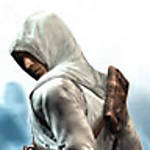
Tarok

Joined: July 28, 2004
KitMaker: 10,889 posts
Armorama: 3,245 posts

Posted: Sunday, December 21, 2008 - 05:53 PM UTC
Hi Bill,
Terrific work as always.
Will you be putting this model through the weathering paces? Maybe some chipping? I've a small project lined up for the hols and would love some pointers
Rudi
Terrific work as always.
Will you be putting this model through the weathering paces? Maybe some chipping? I've a small project lined up for the hols and would love some pointers

Rudi

wbill76

Joined: May 02, 2006
KitMaker: 5,425 posts
Armorama: 4,659 posts

Posted: Monday, December 22, 2008 - 05:23 AM UTC
Quoted Text
Hi Bill,
Terrific work as always.
Will you be putting this model through the weathering paces? Maybe some chipping? I've a small project lined up for the hols and would love some pointers
Rudi
Thanks Rudi! Since this one will be for a June 1941 vehicle at the start of Operation Barbarossa it won't be too heavily weathered as a result. Chipping as a rule isn't something I really go in for as a personal taste, I prefer to simulate that kind of wear through other means. The weathering process is about to begin, I just finished up building the second run of tracks yestereday so that was really the final piece pending.


PatB

Joined: January 12, 2006
KitMaker: 348 posts
Armorama: 18 posts

Posted: Monday, December 22, 2008 - 08:46 AM UTC
Really nice work Bill.
Your paintjob is really inspiring.
I'm looking forward to see it completed.
Pat
Your paintjob is really inspiring.
I'm looking forward to see it completed.
Pat

Tarok

Joined: July 28, 2004
KitMaker: 10,889 posts
Armorama: 3,245 posts

Posted: Monday, December 22, 2008 - 09:32 AM UTC
Quoted Text
Thanks Rudi! Since this one will be for a June 1941 vehicle at the start of Operation Barbarossa it won't be too heavily weathered as a result. Chipping as a rule isn't something I really go in for as a personal taste, I prefer to simulate that kind of wear through other means. The weathering process is about to begin, I just finished up building the second run of tracks yestereday so that was really the final piece pending.
Thanks Bill - I'm interested to see the weathering process as a whole, and not only chipping per se, so will be looking forward to following your progress

bill_c

Joined: January 09, 2008
KitMaker: 10,553 posts
Armorama: 8,109 posts

Posted: Monday, December 22, 2008 - 10:43 AM UTC
Excellent work, Bill. I'm watching this one for a C/D DAK model I have planned.

wbill76

Joined: May 02, 2006
KitMaker: 5,425 posts
Armorama: 4,659 posts

Posted: Monday, December 22, 2008 - 02:25 PM UTC
Patrick, thanks for the kind words, it's my pleasure to share with the group. 
Bill,
Thanks as well. The DML C/D has a lot in common with this kit so many of the features are the same, just a different superstructure essentially. The DAK idea sounds like an interesting project...I'm sure you've got something "special" ready for that type of effort, right?

Quoted Text
Excellent work, Bill. I'm watching this one for a C/D DAK model I have planned.
Bill,
Thanks as well. The DML C/D has a lot in common with this kit so many of the features are the same, just a different superstructure essentially. The DAK idea sounds like an interesting project...I'm sure you've got something "special" ready for that type of effort, right?


wbill76

Joined: May 02, 2006
KitMaker: 5,425 posts
Armorama: 4,659 posts

Posted: Monday, December 22, 2008 - 02:51 PM UTC
I finished up the track runs today for the Model Kasten links. The set recommends 92-93 per side for the Pz III and I assembled the runs first with 90 links each per side for consistency. This particular set has separate hollow guide horns that have to be added to each link and the runs are handed, just like on the real deal, vs. the DML links which were not handed. The DML links also had flash in their molded on guide horns on most of the links as well as some very deep pin marks depending on where the links were on the sprue. At the end of the day, the DML links would likely have taken more work to use so I'm glad I went with the MKs.

After test fitting them to the suspension (I used blue tack to temporarily mount the idler), both sides needed 92 links to fit properly and produce the desired amount of sag. It wasn't necessary to adjust the position of the idler, so it worked out pretty well in both respects.

I used my standard method of painting these types of tracks, beginning with a "primer" coat of Model Master Flat Black by airbrush as a protective barrier before applying the over coat of Non-buffing Metalizer Gunmetal. The metalizer is lacquer-based and past experience has shown it has a tendency to weaken the pins if applied directly in a heavy coat so the primer coat is mostly to prevent that but has the added bonus of reducing the amount of metalizer that needs to be sprayed. This was then dry brushed with Steel and a wash of Raw Umber applied to blend in the Steel with the metalizer.

While the lower hull was still readily accessible, I did some "pre weathering" prep work by dry brushing some Steel and Burnt Umber along with an overall Raw Umber wash. The sprocket teeth were dry brushed with Steel on their contact points as was the idler. The tracks were then installed and the final pins put in place and the idler glued into position.

Returning back to the details, I put in some work on the rear hull. The tail lights were finished with Tamiya Clear Red. The exhausts/mufflers were base coated with metalizer then given multiple successive washes of Rust to build up the finish and provide some variation. I also added some short lengths of 46 link-per-inch chain (originally intended as scale logging chain from a model railroad shop purchased on eBay), attaching them with small amounts of CA gel and then trimming the lengths to match.

The front hull also got some added attention. The width indicator lights had their faces painted with Silver and the glass faces will be added later. I also decided to add a detail that shows up quite frequently on both StuG As and Bs from the 1941 time period in the form of an extra run of track links suspended between the tow hooks. What makes this different is that the photos usually show that the guide horns were turned inward and the run deliberately hung so that it would create a "spaced" effect between the links and the hull for added protection. The MK set didn't have enough links to create this run of 15 links (only 8 links were left over from the set as spares), so I had to improvise. I used some of the DML links and added 2 of the MK links to either end to allow for flexibility in mounting to the tow points. Since I'd already installed the mount points earlier, I had to carefully cut through them and/or the links to get it to fit, but after installation the surgery isn't visible. This run was treated the same as the fitted tracks with the exception of a wash of Burnt Umber used followed by a wash of Rust after the Steel had been dry-brushed. I'm still going to fine tune this a bit more once the links have thoroughly dried in position to avoid problems, but they are 95% done the way I want them.

Next up will be a coat of Future, the markings, and then on to the weathering!

After test fitting them to the suspension (I used blue tack to temporarily mount the idler), both sides needed 92 links to fit properly and produce the desired amount of sag. It wasn't necessary to adjust the position of the idler, so it worked out pretty well in both respects.

I used my standard method of painting these types of tracks, beginning with a "primer" coat of Model Master Flat Black by airbrush as a protective barrier before applying the over coat of Non-buffing Metalizer Gunmetal. The metalizer is lacquer-based and past experience has shown it has a tendency to weaken the pins if applied directly in a heavy coat so the primer coat is mostly to prevent that but has the added bonus of reducing the amount of metalizer that needs to be sprayed. This was then dry brushed with Steel and a wash of Raw Umber applied to blend in the Steel with the metalizer.

While the lower hull was still readily accessible, I did some "pre weathering" prep work by dry brushing some Steel and Burnt Umber along with an overall Raw Umber wash. The sprocket teeth were dry brushed with Steel on their contact points as was the idler. The tracks were then installed and the final pins put in place and the idler glued into position.

Returning back to the details, I put in some work on the rear hull. The tail lights were finished with Tamiya Clear Red. The exhausts/mufflers were base coated with metalizer then given multiple successive washes of Rust to build up the finish and provide some variation. I also added some short lengths of 46 link-per-inch chain (originally intended as scale logging chain from a model railroad shop purchased on eBay), attaching them with small amounts of CA gel and then trimming the lengths to match.

The front hull also got some added attention. The width indicator lights had their faces painted with Silver and the glass faces will be added later. I also decided to add a detail that shows up quite frequently on both StuG As and Bs from the 1941 time period in the form of an extra run of track links suspended between the tow hooks. What makes this different is that the photos usually show that the guide horns were turned inward and the run deliberately hung so that it would create a "spaced" effect between the links and the hull for added protection. The MK set didn't have enough links to create this run of 15 links (only 8 links were left over from the set as spares), so I had to improvise. I used some of the DML links and added 2 of the MK links to either end to allow for flexibility in mounting to the tow points. Since I'd already installed the mount points earlier, I had to carefully cut through them and/or the links to get it to fit, but after installation the surgery isn't visible. This run was treated the same as the fitted tracks with the exception of a wash of Burnt Umber used followed by a wash of Rust after the Steel had been dry-brushed. I'm still going to fine tune this a bit more once the links have thoroughly dried in position to avoid problems, but they are 95% done the way I want them.

Next up will be a coat of Future, the markings, and then on to the weathering!
jimz66

Joined: December 15, 2006
KitMaker: 1,165 posts
Armorama: 1,105 posts

Posted: Monday, December 22, 2008 - 05:54 PM UTC
Tracks look great Bill. Very nicely done.
 |




